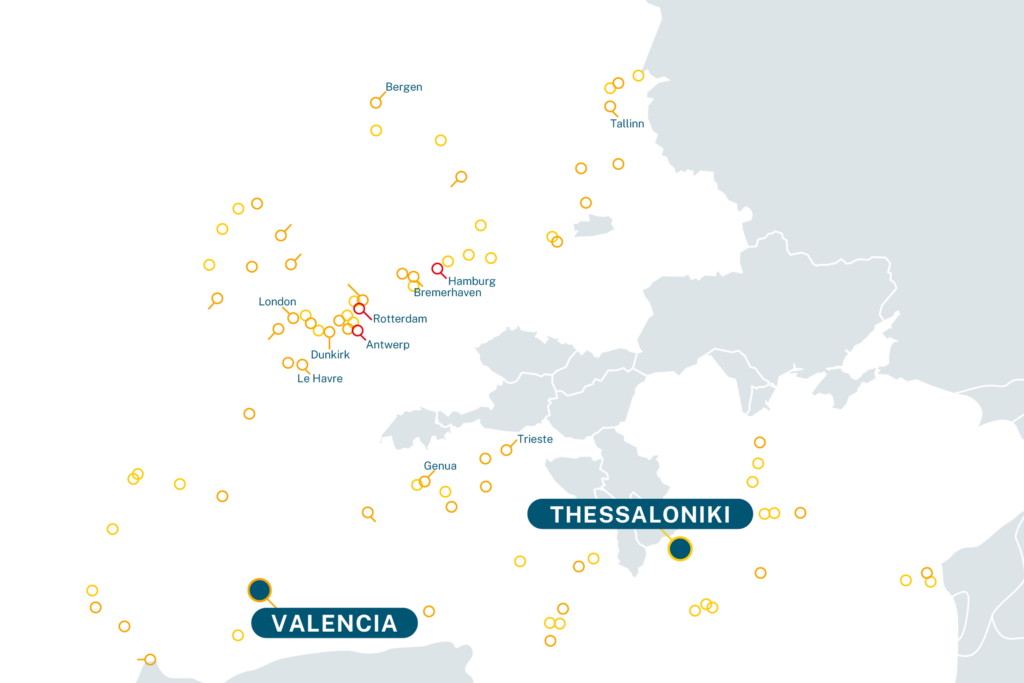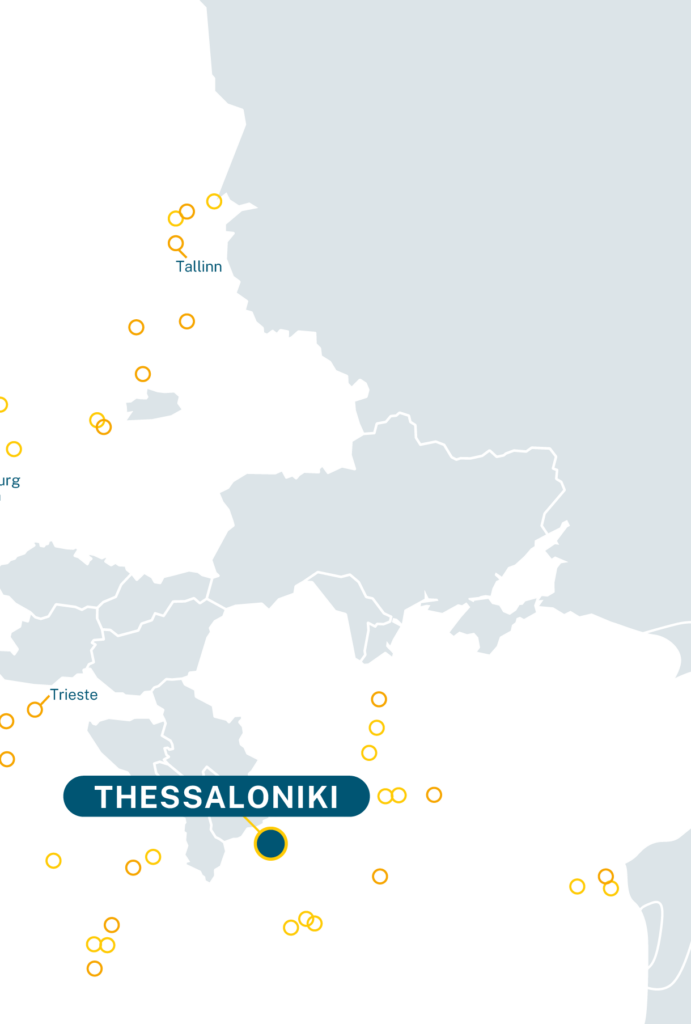Europe‘s largest ports by goods handled
x
THESSALONIKI
Port’s characteristics
| Port | Thessaloniki |
| Sea basin | Aegean Sea |
| Port’s area | 1.5 km2 |
| Yearly cargo traffic | 7.3 million tons (2023) |
| Direct employment | 525 |
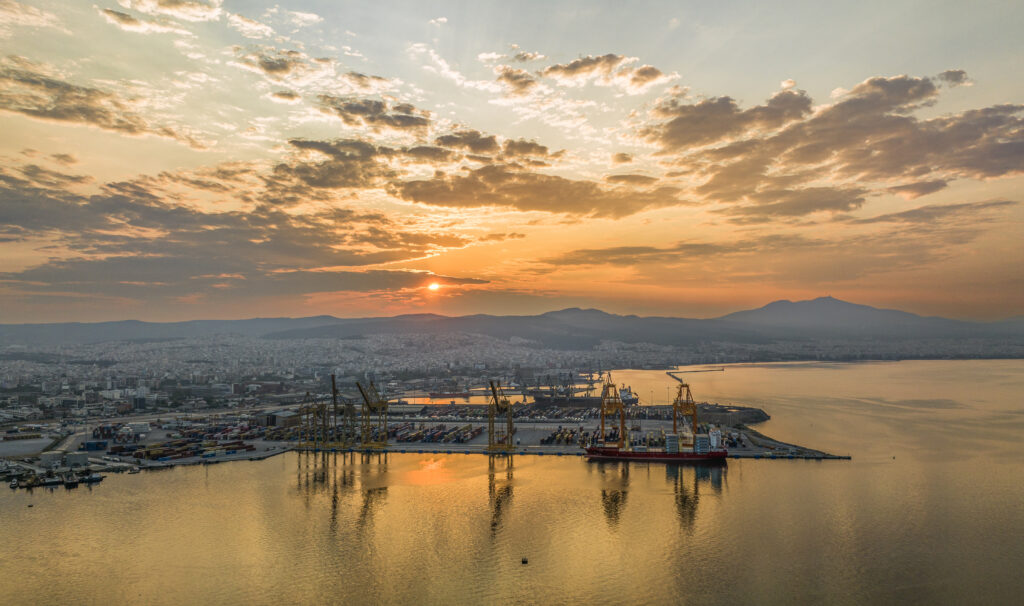
Case study description
Location of plant: The Thessaloniki case study consists of the CAO plant producing lime located in the greater port area, 10 km away from the port. The plant produces approximately 24,000 tons of CO2 from limestone calcination and a total of 34,000 tons of CO2 annually.
E-methanol production capacity (estimated): About 14,000 tons/year of e-methanol could be produced if the 24,000 tons of CO2 emitted from limestone calcination is transformed into fuel.
E-methanol offtakers: Exact ships to be converted and powered with e-methanol need to be investigated. Potential locations for an e-methanol infrastructure at the piers of the port are already identified.
Key activities to prepare the future implementation of the value chain
It will be assessed which ships docking in the port can be converted to e-methanol and at what cost, and what their future demand will be. The feasibility of the integration of a power-to-methanol in a similar lime plant in Volos, Greece, operated by affiliated partner Inventors will also be investigated. Furthermore, a specific task will be about studying innovative CO2 capture technologies to be able to valorise CO2 from industrial processes.
E-methanol plant characteristics
Feedstock: CO2 emissions come from the lime manufacturing process at the CAO’s plant and are either recovered from the exhaust gas emissions of the heat production unit or from the so-called lime-off gases, a subproduct of CaCO3 reaction. The technical options regarding water and energy supply for hydrogen production via electrolysis need to be investigated.
Produced chemicals: the objective is to produce only e-methanol at CAO’s lime plant. The produced e-methanol will be transferred via tanker trucks or a pipeline and stored at the port and then be supplied to e-methanol powered vessels.
Long term ambition and vision
This case study will help in assessing the potential of e-methanol production out of industrial and process CO2. This is seen as an essential transition pathway until enough biogenic CO2 is available for e-methanol production.
x
Valencia
Port’s characteristics
| Port | Valencia |
| Sea basin | Mediterranean Sea |
| Port’s area | 5.6 km2 |
| Yearly cargo traffic | 79 million tons (2022) |
| Direct employment | 17,973 |
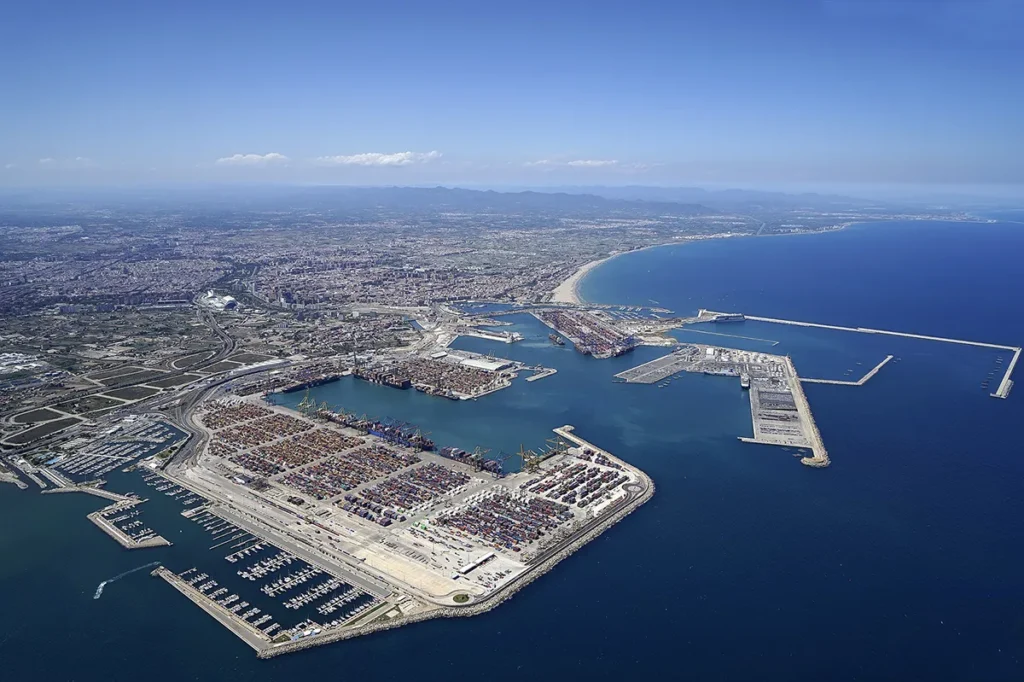
Case study description
Location of plant: Two wastewater treatment plants (WWTP) operated by partner GOMSL located close to Valenciaport: Pinedo and Quart Benàger. Pinedo generates about 6,000 tons CO2/year while Quart Benàger about 1,500 tons CO2/year.
E-methanol production capacity (estimated): about 5,600 tons of e-methanol per year could be produced with the ICODOS technology and the CO2 from the biogas of the Pinedo and Quart Benàger plants.
E-methanol offtakers: the daily production would be sufficient to supply 3 tugboats operating in the port of Valencia by Boluda Towage.
Key activities to prepare the future implementation of the value chain
The administrative and technical requirements for the ICODOS plant potential integration in Pinedo or Quart Benàger WWTPs will be thoroughly assessed. Furthermore, the e-fuel supply to the Port of Valencia and the use of e-methanol by tugboats will be investigated.
E-methanol plant characteristics
Feedstock: H2 will be produced locally via an electrolyser supplied by local on-site power generation (solar PV) and additional renewable energy purchased on the market. Hydrogen will be stored and later fed to the ICODOS technology together with biogas resulting from the anaerobic digestion of sludge.
Produced chemicals: biomethane that can either be fed into the gas grid, transformed in bio-liquefied natural gas (bio-LNG) or burnt in combined heat and power (CHP) plants. The produced heat and power can be used on site and renewable e-methanol will be transported and stored at the port of Valencia for further use in ships.
Long term ambition and vision
This case study should support the development of a new business activity – renewable fuel production – for wastewater treatment plants. Learnings will be shared with operators of other industrial or agricultural sites producing biogas.

